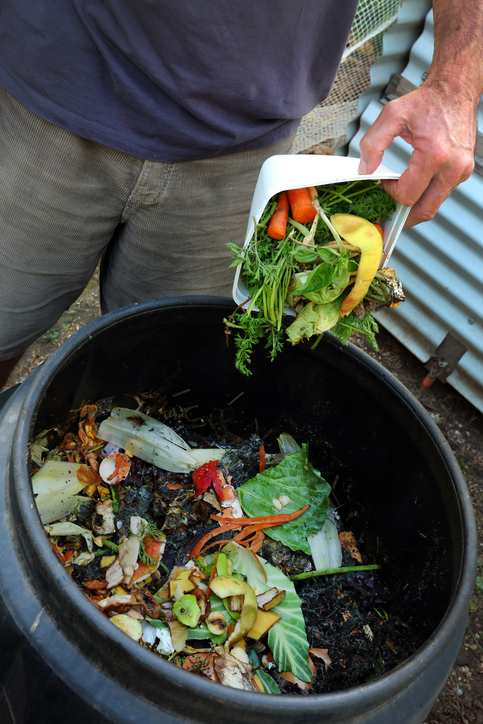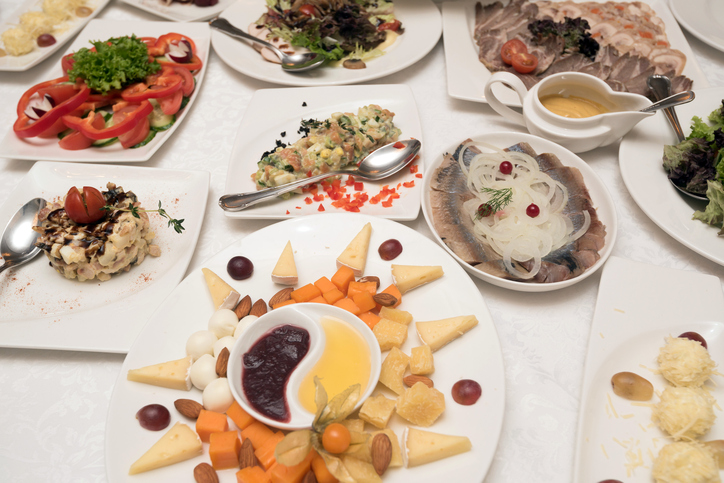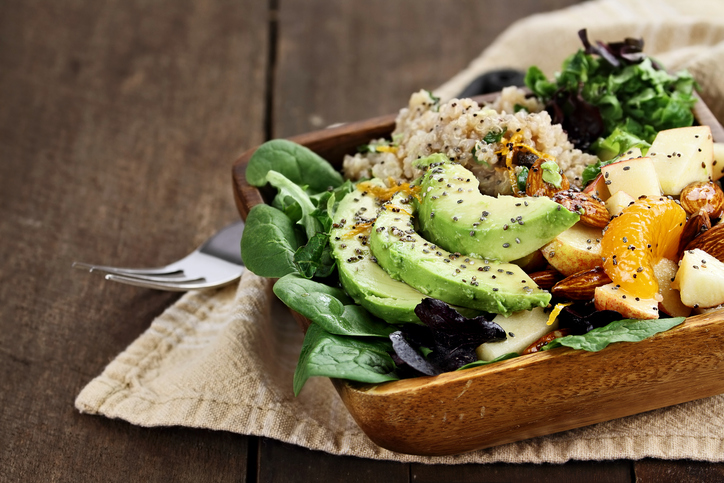So much can be said for the future of our industry and of food. There is too much hunger, yet food waste is a major problem. We grow field after field of crops that will feed our cars, our cattle, and ourselves, but we grow in unsustainable patterns with inefficiencies that cause massive price hikes on crops that would be affordable and environmentally friendly if they were only grown cyclically. And what about dining? We come together to celebrate, socialize, and conduct business, but the changing landscape of food laws and dietary needs has created a different environment for the industry to function within. Following are a few of my 2017 cutting edge food trends & predictions to add to your watch list this year.
 Food Waste
Food Waste
Food waste has become a global topic. Every year, one-third of the food produced for human consumption is wasted. In the U.S. alone, 40% of our food ends up going to waste. In 2016,France outlawed food waste by supermarkets, requiring that unsold food be donated rather than destroyed. Many California, Colorado, and Texas cities are actively working on zero food waste and sustainable waste management plans.
Right now, restaurants are leading the way when it comes to food waste management with grocery close at their heels. I would love to see the meetings and events industry take the lead on zero waste events and effective food waste plans in the kitchen. The war on waste is just beginning relative to other sustainability concerns, but we all have a part to play in bringing this trend into standard practice. Watch and properly manage your supply chain, stop the over-emphasis on appearance, and find ways to incorporate the entire food item into the menu. It’s not just a responsible, Earth-friendly approach. It’s actually better for our bottom line.
 Family-Style Dining
Family-Style Dining
Tapas, tasters and multi-course meals are giving way to the community dining experience of the feast. Family-style dining is here and it’s a major growing trend. Many are offering a small a la carte menu to supplement the large dishes and to serve those with special dietary needs. This format is less stressful for diners than sharing small plates and eyeing how everything will be divided. Plus, it’s more efficient in terms of our cost.
We can offer less variety because attendees have several large dishes to choose from and that’s it. There’s no more, “who had the steak?” Instead, you’re serving a communal experience and guests worry less when deciding what to eat because they are compromising with the group. This dining style always comes across as more of a celebration than single plated meals and adds to the festivity of the event. And as long as you include your custom-eater requests into the menu from the beginning, you’ll have less confusion in the kitchen.
 Veggie Focus
Veggie Focus
A heavy veggie focus continues to rise and not just because there are more vegetarians. People are more interested in creative, satisfying dishes that are veggie-based. Creating a produce-centric menu piques attendees interested and if you source in-season and local produce, can be easy on the bottom line as well as maintain a nice low carbon footprint. Plant-based innovations are not just a meat substitute anymore. They are working their way into snacks, condiments, and are a huge hit among those with food allergies. For example, a veggie or vegan-based meal will often include dairy substitutes, such as nut-based milk and sauces. You may recall that milk is one of the “Big 8” allergens. It also cuts out shellfish and crustaceans, two more “Big 8” allergens. Where peanuts and tree nuts need to be cut, we can still substitute with seeds where appropriate. There are many reasons to love this trend, but my favorite is the mind-bending creativity in menu planning and the longer shelf-life outside refrigeration, making the kitchen that much safer.
 Culinary Cannabis
Culinary Cannabis
Cannabis is making it’s way to mainstream acceptance and as that develops we are seeing more and more cannabis cuisine opportunities. Just to be clear, there are two types of cannabis. One has cannabinoids (CBD), which is the medicinal form of cannabis that does not give a person a high. The other has tetrahydrocannabinol (THC), which is the active ingredient that is used to get ‘stoned.’
Chefs specializing in cannabis cooking are teaching consumers, in states where it’s legal, how to infuse foods from home and are being called in to cater cannabis-themed dinner parties. We’re already seeing dinner parties for those with medical cards where pre-portioned CBD infused butter is provided with artichokes for dipping. Or gourmet cannabis desserts give guests who’ve consented an end of night buzz, rather than the more common digestif. A surprising number of corporate team-building events are building THC cannabis meals into their leadership retreats as way to help people relax and bond. It may not have hit the meetings and events industry in full-force yet, but special requests are already here.
 Allergy Mindful Venues
Allergy Mindful Venues
Canada is ahead of the curve here, but several U.S. cities also have restaurants adapting menus to accommodate those with dietary restrictions, especially those with food allergies and intolerances. In part, this is a reaction to the fast-growing number of consumers who have allergies. In an attempt to fill a growing need, restaurants are building allergy-friendly menus to ensure all are welcome and able to safely eat. Consumers with food allergies have been protected for years by the Americans with Disabilities Act. This year, there is finally a trend beyond the basic duty of care reminders and accommodation requests that recognizes this growing population. This is a lovely sign of the forward momentum of inclusion. Planning dietary restrictions into our event menus is becoming more and more commonplace, which will reduce waste in better our bottom line.
 Insects for Protein
Insects for Protein
Actually, meat substitutes and alternative cuts are food trends that will be growing this year. Meat substitutes are part of the vegan/vegetarian upward trend. And alternative cuts are a big deal as we set out to be more efficient and interesting in our meat choices. But bugs have been on the back burner and are earning some recognition. Many regions around the world already consume insects as dietary staple. Insects are fairly inexpensive to cultivate, are a rich source of protein and are easy to transport. In 2013, the United Nations published an official recommendation that developed nations turn to insects as a way to establish food security and fight hunger, global warming, and pollution. In a recent interview with Nestle, the food innovation giant gave a resounding yes to the question of insects being included as a popular organic source of protein along with algae. The psychological barrier has been the biggest obstacle to introducing beetles, mealworms, and other insects, but the trend favoring alternative foods is showing there may be growing mainstream support very soon.
There are many food trends coming our way, but these are 2017 cutting edge food trends we can all prepare for. Food truck popularity, casual fast dining, and a growing inventory of food-related tech beyond calorie counters are all on the docket for 2017, but the trends I’ve shared with you here illustrate several opportunities to be on the cutting edge of the meetings and events industry by planning for and creatively embracing new ideas and experiments.
Let me know your successes and advice as you navigate trends in the coming year.



